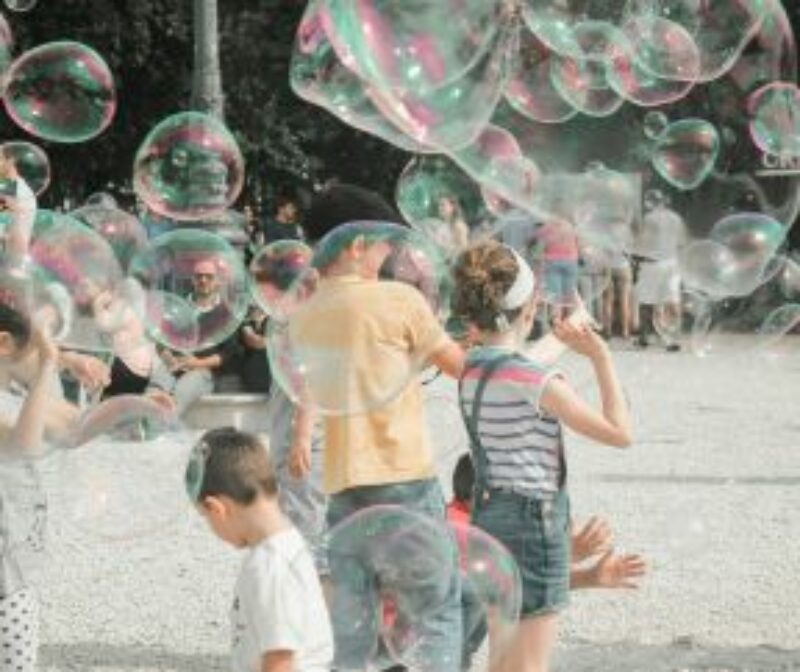Photo by: Andriyko Podilnyk on Unsplash
The term joyride conjures different images for different people. So I’ll start by asking: when you imagine a joyride, what comes to mind? For some, it might be riding a bike to grab an ice cream cone with their children. For others, it might be driving a little too fast down the infamous Mulholland Drive of Hollywood Hills with friends. Regardless of what the experience may be, joy brings momentum, connection, and emotions of exuberance and delight.
As a developmental psychologist who has studied human development, I have found that joy is no ordinary emotion, but a powerful virtue that can promote individual wellbeing and the common good. It is a response to what should be, what could be, and, at some point, what will be. Both theologians and psychologists have generally agreed that you cannot directly pursue joy. Rather, joy is gained through the process of thriving, which involves a journey of transformation towards our telos (or purpose). Thus, I want to turn the common metaphor of a joyride on its head and re-render the term with a new meaning that both informs and inspires a journey of enduring joy—and I’ll do this by using a bicycle analogy.
Equipping Youth for the Journey
Psychologists refer to adolescence as the age of opportunity.[1] Given the radical development of the brain and the increasing capacities for abstract thinking, heightened emotions, and increased longings for connection, adolescence marks a very active time of discovery and disorientation. Therefore, this is an important stage in their lives when we, as caring adults, can help equip them for the joyride. Here are three necessary essentials:
1. Youth need a GPS.
Like a navigational system that directs us to our destination, youth need a set of beliefs and values (or what I like to refer to as a moral compass) that informs them of what matters most in their life. Joy is found when our actions are aligned with our morals and values. A GPS or moral compass can orient youth towards their purpose, align their actions to their goals, and redirect them when they get off track.
These ideals—what they believe in, what they consider right or wrong, what is of value to them—can stimulate and nurture youth into civically engaged adults. As youth define and live out these ideals, they need support along the way, which brings us to the next element.
2. Youth need a peloton.
A peloton is a pack of riders (think Tour de France) who travel as an integrated unit during a bicycle race. Riders take turns leading the pack to bear the brunt of the wind, allowing others to draft behind them and get a small break when needed. In the same way, youth need a peloton—parents, mentors, youth workers, advocates—to support them through their joyride. Youth cannot ride alone. If team members of a peloton are not deeply attuned to one another, the principal rider risks fatigue and crashing down before the end of a race.
As humans, we are deeply created for connection, and joy occurs when we are mutually and meaningfully connected with others. Therefore, youth need caring adults who will pull and support them through the joyride.
3. Youth need joy training.
Drawing from the concept of habitus, which suggests that we can cultivate our capacity for joy, there are exercises or practices that can foster joy in youth. Research demonstrates that our bodies and minds change when we engage in practices that help us become more receptive and present. So, just as youth train their bodies to improve in a sport, they can also train and develop their “joy muscles.” This training involves:
- Exercises, such as keeping a gratitude journal, that remind them of what really matters and brings joy to them.
- Participating in communities that increase and strengthen their connections and relationships with others and God.
- Spiritual practices, such as prayer and other forms of meditation, that will enable other virtues such as compassion, kindness, empathy, gratitude, and self-awareness.
Such practices can form and shape joy in youth, allowing them to feel less emotionally scattered and more motivated to pursue what matters. In a society where depression, anxiety, and mental health are an all-time high in today’s youth, joy training can provide emotional well-being and help youth develop resilience. The positive emotions of joy motivate and the meaningful aspects of joy direct youth towards what matters most. Increasing our awareness of what brings joy is an important antidote to those who struggle with motivation or struggle with direction.
A Transformational Virtue
Youth are well equipped for a joyride when they have a GPS that directs them towards their purpose, a peloton to cheer them on and support them through good and difficult times, and training to strengthen their joy muscles. When joy becomes a habit, joy is a transformational virtue that can propel youth to move forward and thrive through the highroads and valleys of life.[2]
References
[1] Check out Dr. Steinberg’s Age of Opportunity: Lessons from the New Science of Adolescence.
[2] King, P.E. & Defoy F. (2020). Joy as a virtue: The means and ends of joy. Journal of Psychology and Theology, 48(4), 308-331. https://doi.org/10.1177/0091647120907994
Continue Exploring

Emotions
Discovering Joy
This post is based upon an interview between Psychology Today and Dr. Pam King

Emotions
Why You Need to Make Time for Play
You might be surprised about the benefits of play for your wellbeing and your spiritual health. Here's how to get more in your life.

Emotions
A Practice: Small Acts of Love—An invitation to create and explore
Is it possible to create a more loving world? Practices that link us to our senses support our ability to love.

